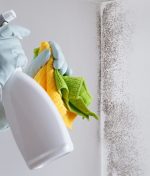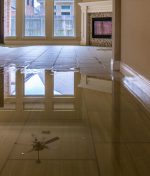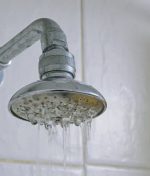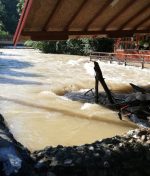How Can You Ensure Proper Ventilation to Prevent Mold Growth?

- April 17, 2025
- byadmin
- Mold Remediation
Mold thrives in damp, stagnant environments—and in places like San Diego, where moisture levels can fluctuate due to storms, floods, or plumbing issues, mold can become a serious concern if ventilation is overlooked. Proper ventilation plays a critical role in reducing indoor humidity, improving air circulation, and preventing mold from gaining a foothold in your home or business.
At RAMM Water Restoration, we’ve seen how poor ventilation can turn a small water issue into a major mold infestation. This blog will help you understand how to ensure your home or property is properly ventilated and protected against mold growth
Why Is Ventilation So Important for Mold Prevention?
Mold spores are always present in the air, but they need moisture and organic material to grow. When warm, moist air is trapped inside a building and isn’t circulated or removed, that’s when mold begins to form—often behind walls, under flooring, or in HVAC systems. Ventilation helps:
- Regulate humidity levels
- Promote air movement
- Dry out damp areas
- Reduce condensation
Key Areas Where Ventilation Matters Most
1. Bathrooms
Bathrooms are ground zero for mold due to frequent moisture from showers and sinks. Always use exhaust fans while bathing and for at least 30 minutes afterward. If you don’t have an exhaust fan, open a window or door during and after your shower.
Pro tip: Clean your exhaust fan once a month to keep it functioning efficiently.
Pro tip: Clean your exhaust fan once a month to keep it functioning efficiently.
2. Kitchens
Cooking, boiling water, and washing dishes all generate steam and heat. Make sure your range hood vents outside (not back into the room), and turn it on every time you cook.
Also consider: Keeping lids on pots while boiling and wiping down condensation around windows.
Also consider: Keeping lids on pots while boiling and wiping down condensation around windows.
3. Laundry Rooms
Dryers should always be vented to the outdoors. An unvented or poorly vented dryer can dump large amounts of moist air into your home.
Bonus tip: Check your dryer vent for lint buildup regularly. Clogged vents restrict airflow and can also pose a fire hazard.
Bonus tip: Check your dryer vent for lint buildup regularly. Clogged vents restrict airflow and can also pose a fire hazard.
4. Attics
Improper attic ventilation leads to trapped heat and moisture rising from lower levels of your home. Without proper venting (such as ridge and soffit vents), condensation can form on wood structures, insulation, and sheathing—prime conditions for mold growth.
Maintenance reminder: Inspect your attic twice a year and ensure that air vents are not blocked by insulation or debris.
Maintenance reminder: Inspect your attic twice a year and ensure that air vents are not blocked by insulation or debris.
5. Basements and Crawl Spaces
Basements and crawl spaces are typically cool and dark—ideal for mold. These areas often suffer from poor air circulation, especially if the home is older.
Consider:
Consider:
- Installing vents or fans
- Using a dehumidifier
- Sealing cracks in walls and floors to prevent water intrusion
Everyday Habits to Improve Indoor Ventilation
You don’t need a complete renovation to improve airflow. Here are simple habits that help:
- Open windows and doors when weather allows
- Use ceiling fans to circulate air, especially in rooms that don’t get much use
- Keep furniture away from walls to allow air to move freely
- Invest in a hygrometer to monitor humidity (aim for 30–50%)
When Mechanical Ventilation is a Must
Sometimes natural ventilation just isn’t enough—especially in large buildings, multi-unit homes, or post-flood scenarios. In those cases, mechanical ventilation systems like HRVs (heat recovery ventilators) or ERVs (energy recovery ventilators) are worth considering. These systems exchange stale indoor air with fresh outdoor air while maintaining indoor temperature, offering long-term protection from moisture buildup.
Signs That Your Home Has Poor Ventilation
Not sure if your ventilation is doing its job? Watch for these red flags:
- Persistent musty smell
- Condensation on windows or walls
- Peeling paint or wallpaper
- Visible mold spots on ceilings, walls, or around vents
- Feeling stuffy or uncomfortable indoors even with temperature control
If you spot any of these issues, it’s time to reassess your home’s airflow and moisture control strategy.
Preventative Measures After a Water Damage Event
After a flood or leak, moisture can linger in hidden places—even after surfaces appear dry. This is when mold is most likely to begin growing, sometimes within 24 to 48 hours.
Here’s what you should do:
- Act fast: Begin drying out affected areas immediately.
- Use fans and dehumidifiers: These speed up the drying process.
Call in professionals: Water restoration experts like us use infrared cameras and moisture meters to detect hidden dampness and prevent mold before it starts.
How We Can Help
At RAMM Water Restoration, we know that flood damage and mold aren’t just technical issues—they’re deeply personal. These situations affect your family, your health, and your peace of mind. That’s why we combine professional expertise with compassionate service to restore not just your home, but your comfort and confidence.
We don’t just clean up—we educate, guide, and support you through every step. Whether you’ve just had a flood, suspect mold growth, or want to proactively improve your ventilation, our friendly team is here to help.
Let us restore your space—and your peace of mind—with kindness and care.
Categories
Recent Posts
How Hard Water Issues Can Lead to Plumbing Leaks in San Diego Homes
December 12, 2025
Understanding the Difference Between Flood Damage and Water Damage
December 12, 2025
How to Spot Water Damage in Ceilings Before It Gets Worse
December 12, 2025









